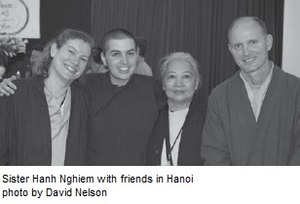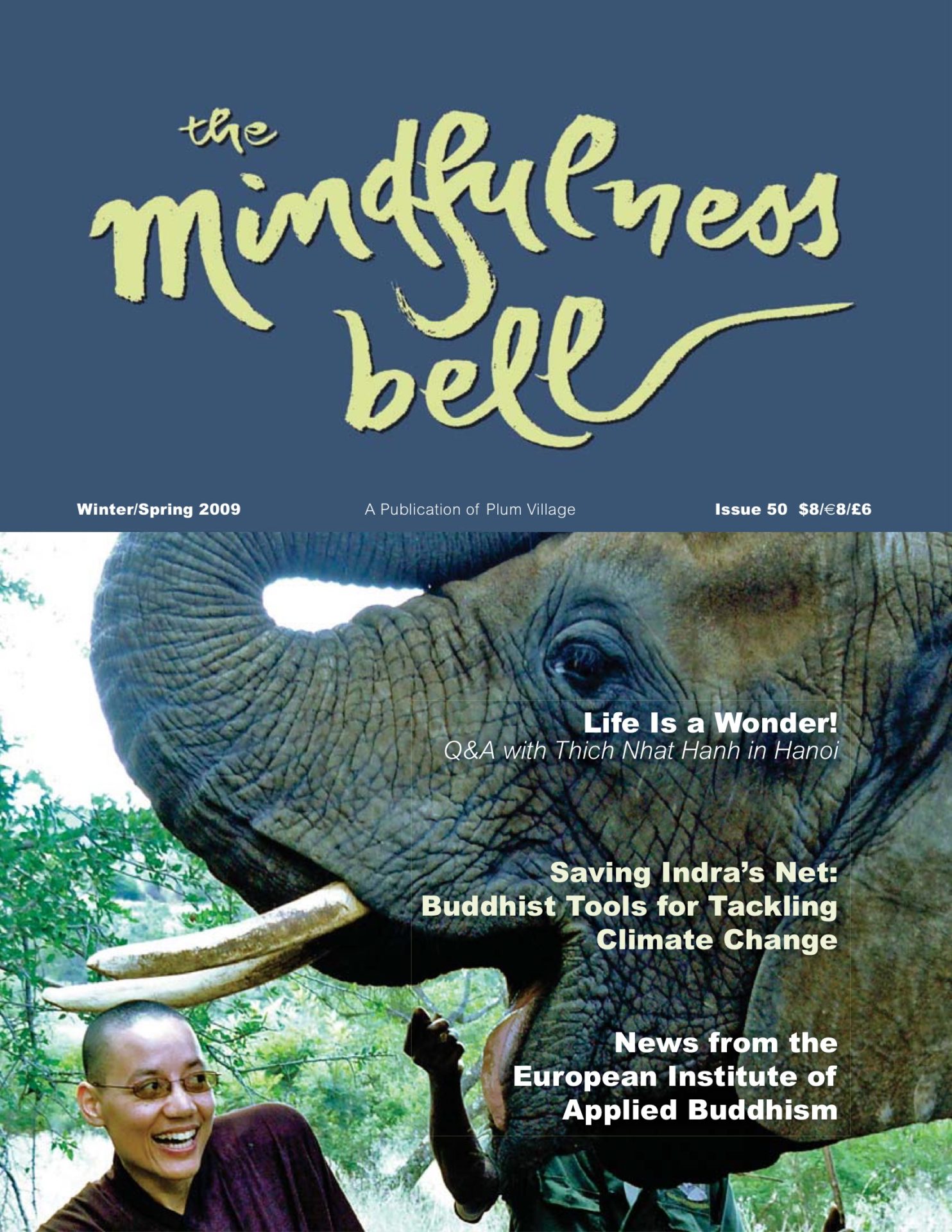By Sister Hanh Nghiem
The mind can go in a thousand directions, but on this lovely path I walk in peace. With each step, a gentle wind blows. With each step, a flower blooms.
This is a gatha, a practice poem that was sung in the hearts of the monastic and lay practitioners at the seven-day retreat in Hong Kong. The Buddha’s Enlightenment Retreat took place May 24 to 30,
By Sister Hanh Nghiem
The mind can go in a thousand directions, but on this lovely path I walk in peace. With each step, a gentle wind blows. With each step, a flower blooms.
This is a gatha, a practice poem that was sung in the hearts of the monastic and lay practitioners at the seven-day retreat in Hong Kong. The Buddha’s Enlightenment Retreat took place May 24 to 30, 2008 with Brothers Phap An and Phap Trach, and Sister Hanh Lien and myself from Plum Village, along with Brothers Phap Tu and Trung Hai from Vietnam.
We came to the retreat, held at the Kadoorie Agricultural Research Centre of Hong Kong University, to learn about Buddhist psychology. (From the program: “Zen Master Thuong Chieu of Vietnam in the thirteenth century said that our practice would become much easier once we had a better understanding of its process. The teaching of Master Vasubandhu on consciousness will be used as the foundation for the retreat. We will briefly investigate the philosophical atmosphere in the pre-Buddhist period in order to understand and fully appreciate the enlightenment of the Buddha. We will ... then trace the historical development of the Yogacara School, which leads to the teaching of Master Vasubandhu as given in Ch’eng Wei-Shih Lun. The key teachings of the Thirty Verses will be discussed and applied to the daily difficulties of modern life. The basic practice of sitting meditation, walking meditation, and other practices will also be emphasized as foundation for a deep transformation.”)
We wanted to have a better intellectual grasp, but we came home with a practice to heal our hearts and understand our mind. We were given the tools to live with freedom, more mindfully, in our daily life.
In a city that hustles and bustles from the moment it awakes till it falls asleep, it wasn’t easy for people to get off seven days to come to practice as a Sangha, study the Buddha’s teachings, and realize the Dharma of his or her life. Each of us figured out a way to be present at the retreat or what was called camp. Some of the eighty retreatants had to leave for a night to go work and then they would return to the retreat. Others couldn’t leave their families, so they had to commute every day in order to be able to attend the retreat.
We knew our priority was to learn, study, and practice the Buddha’s teachings, so that is what we did. Most of the retreatants were older in age because the topic for the retreat was quite advanced, but the few young folks sure did bring character and spice to the retreat!
The first few Dharma talks by Thay Phap An were dedicated to the basic practice and a brief history of Buddhism, and then remaining days were devoted to Buddhist psychology. Still, the basic practice was highlighted to take home.
The retreat was organized by the local Hong Kong Sangha from A to Z. The monks and nuns made the schedule and helped lead the activities, but the smooth flow of the retreat was thanks to the Hong Kong Sangha. Every morning we heard the mini-bell invited to wake us up and the bell was also invited before each activity by the lay practitioners. We also had other bells of mindfulness to bring us back to the beautiful environment surrounding us, such as the croaking of the bull frogs, the buzzing and biting of the mosquitoes, the luscious green vegetation, and the peace and quiet. This particular section of H.K.U. was donated by a family with the intention to promote more understanding of the environment and a way to preserve and develop the vegetation that already existed in the area.
The heavens treated us well because every day it rained, but nonetheless when it was time to do walking meditation, the sky cleared up for us. In the East rain is an auspicious sign that heaven is happy and the celestial beings are coming down to hear the Dharma being pronounced.
We also had the opportunity to practice chi qong every day for nearly two hours led by Thay Phap An. It was a great success and very healing for a number of people.
The Beginning Anew presentation and practice were carried out very elegantly by Brother Phap Trach. The contribution of the retreatants brought much enlightenment to our being together. They would go into the center of the circle to pick up the flower and then bring the flower to the person they wanted to share with. Many people shed tears of happiness because they were so touched by the kind calm words that were being spoken to them.
One unusual occurrence during the retreat was that the chief cook hurt her arm and couldn’t cook, so they ordered us pizza. The misfortune allowed us all to enjoy a very pleasant picnic dinner together outside and to bond a little closer before the retreat ended.
We left the retreat with an understanding of how to live our life rather than bury ourselves ten feet underground with the question, what is the meaning of life? We could breathe, because we are alive. Mindful breathing was our peace, joy, and freedom.

Sister Hanh Nghiem, True Action, lives in New Hamlet at Plum Village.

